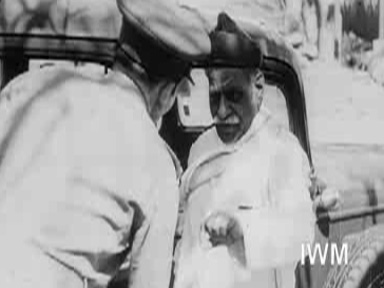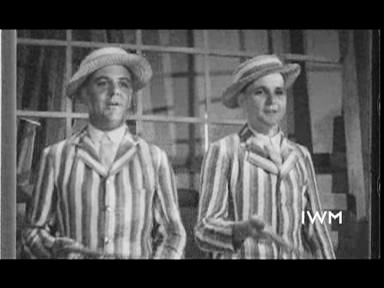... tensions in the colonial response. The narrative is at pains to point out that ‘the administration and church welfare organisation raised funds to build settlements and model villages’, but it also reveals that the colonial authorities looked ...
Advanced Search
-
-
... Empire (largely avoiding the word ‘Empire’), in which the Africans assumed greater responsibility for their own welfare and government. This is evident in the film, which promotes African leadership and envisages modern (British taught) skills ...
-
... -Fly country’ – seemingly bypasses the largely illiterate local audience, and presents the scheme as evidence of the welfare work of the British in Africa.
The film addresses topics prevalent within other BEKE films, such as the ...
-
... effects of Federation after 1953. The end of the war had seen the implementation of the 1940 Colonial Development and Welfare Act, which committed the Government to spending on the improvement of working conditions for colonial workers (Cooper, 2004, 302 ...
-
... as a historical record not just of the widespread community programmes introduced in Nigeria after the war through the Development and Welfare Act, but also of the ways in which the British sought to represent its own role in these developments. The film ...
-
EASTERN ROSE 1942
 ... technology – for example, in the overhead cable – and the continuing local traditions. It further highlights the welfare opportunities provided for the workers’ families at the village schools. By 1945 there were 55 school co-operatives ...
... technology – for example, in the overhead cable – and the continuing local traditions. It further highlights the welfare opportunities provided for the workers’ families at the village schools. By 1945 there were 55 school co-operatives ... -
FROM CANE TO CUBE 1950

 ... imperial industrial process.
... imperial industrial process.The film attempts, in common with other industrial process films of the time, to promote the welfare aspects of the industry. The audience sees the West Indian worker in his bed at home with pictures of Hollywood ...
-
... Parachute for Indian Troops in Italy’ – as an example of the newsreel’s emphasis on the British welfare of Indians overseas. As he notes, footage of Indian troops in Italy was often used, in part because of the difficulties in obtaining ...
-
... 67 emphasises the work of Indian troops overseas. As Philip Woods has shown, the film places a particular importance on the welfare of Indian troops, with the opening item showing members of the Defence Council visiting ‘our men in the hospitals ...
-
... ‘served…his fellow men’). Secondly, the film seeks to highlight the advances in medicine and the social welfare provided for the troops, through these blood transfusions. In particular here, the item stresses that blood transfusions are ...
-
MALAYA CELEBRATES 1953
 ... the ‘civilised’ nature of the security forces (paying due respect and drinking together). Further scenes highlight the welfare work of the British (‘the old and poor were not forgotten either and free meals were given to many’) and ...
... the ‘civilised’ nature of the security forces (paying due respect and drinking together). Further scenes highlight the welfare work of the British (‘the old and poor were not forgotten either and free meals were given to many’) and ... -
... , vets and agricultural officers threatened. This, then, is presented as an attack on British development, progress and social welfare. An attack that the commentator suggests was not widely supported (‘the sort of cooperation that prompted many ...






